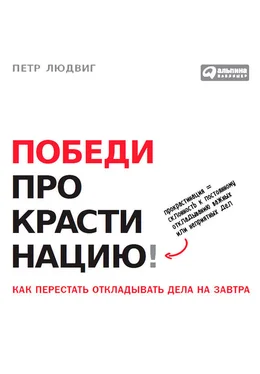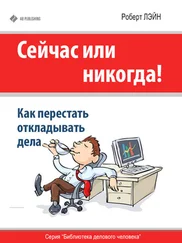59. Haney, C., Banks, W.C., Zimbardo, P.G . Study of prisoners and guards in a simulated prison // Naval Research Reviews. 1973 b . № 9. P. 1–17.
60. Harber, K., Zimbardo, P.G., Boyd, J.N . Participant Self-Selection Biases as a Function of Individual Differences in Time Perspective // Basic and Applied Social Psychology. 2003. Vol. 25. № 3. P. 255–264.
61. Harris, S., Sheth, S.A., Cohen, M.S . Functional neuroimaging of belief, disbelief, and uncertainty // Annals of Neurology. 2008. Vol. 63. № 2. P. 141–147.
62. Haub, C . How Many People Have Ever Lived on Earth? Population Reference Bureau [online]. 1995, 2002. URL: http://www.prb.org/Articles/2002/HowManyPeopleHaveEverLivedonEarth.aspx.
63. Heyman, J., Ariely, D . Effort for Payment: A Tale of Two Markets // Psychological Science. 2004. Vol. 15. № 11. P. 787–793.
64. Hilbert, M., López, P . The World’s Technological Capacity to Store, Communicate, and Compute Information // Science. 2011. № 6025. P. 60–65.
65. Hill, A.L., Rand, D.G., Nowak, M.A., Christakis, N.A . Emotions as infectious diseases in a large social network: the SISa model // Proceedings of the Royal Society B: Biological Sciences. 2010. Vol. 277. № 1701. P. 3827–3835.
66. Howes, M.J., Hokanson, J.E., Loewenstein, D.A . Induction of depressive affect after prolonged exposure to a mildly depressed individual // Journal of personality and social psychology. 1985. Vol. 49. № 4.
67. Hulme, O . Comparative neurobiology: Hedonics& Happiness. Vancouver (Canada): University of British Columbia, 2010.
68. Imai, M . Kaizen: the key to Japan‘s competitive success. New York: McGraw-Hill, 1986.
69. Isen, A.M . Psychological and biological approaches to emotion. Hillsdale (N.J.): L. Erlbaum Associates, 1990. S. 75–94.
70. Iyengar, S.S . The art of choosing. New York: Twelve, 2010.
71. Iyengar, S.S., Wells, R.E., Schwartz, B . Doing Better but Feeling Worse: Looking for the «Best» Job Undermines Satisfaction // Psychological Science. 2006. Vol. 17. № 2. P. 143–150.
72. Iyengar, S.S, Lepper, M.R . When choice is demotivating: Can one desire too much of a good thing? // Journal of Personality and Social Psychology. 2000. Vol. 79. № 6. P. 995–1006.
73. Iyengar, S.S., Huberman, G., Jiang, G. How Much Choice is Too Much? Contributions to 401(k) Retirement Plans // Pension Design and Structure: New Lessons from Behavioral Finance. 2005.
74. Iyengar, S.S., Lepper, M.R . Rethinking the value of choice: A cultural perspective on intrinsic motivation // Journal of Personality and Social Psychology. 1999. Vol. 76. № 3. P. 349–366.
75. Jackson, S., Csikszentmihalyi, M . Flow in sports. Champaign (IL): Human Kinetics, 1999.
76. Johnson-Laird, P.N . Mental models: towards a cognitive science of language, inference and consciousness. 5th ed. Cambridge (Mass): Harvard University Press, 1993.
77. Kahneman, D., Krueger, A.B . Developments in the measurement of subjective well-being // The journal of economic perspectives. 2006. Vol. 20. № 1. P. 3–24.
78. Kalina, K . Základy klinické adiktologie. Praha: Grada, 2008.
79. Kalina, T., Vána, J . Sinice, rasy, houby, mechorosty a podobné organismy v současné biologii. Praha: Karolinum, 2005.
80. Keely, L.C . Why isn’t growth making us happier? Utility on the hedonic treadmill // Journal of Economic Behavior. 2005. Vol. 57. № 3. P. 333–355.
81. Kinsella, K.G . Changes in life expectancy 1900–1990 // The American Journal of Clinical Nutrition. 1992. Vol. 55. № 6. P. 1196–1202.
82. Kringelbach, M.L . The Functional Neuroanatomy of Pleasure and Happiness // Discovery Medicine. 2010. Vol. 9. № 49. P. 579–587.
83. Krug, E.G., Mercy, J.A., Dahlberg L.L., Zwi, A.B . The world report on violence and health // The Lancet. 2002. № 9339. P. 1083–1088.
84. Kruger, J., Dunning, D . Unskilled and unaware of it: how difficulties in recognizing one‘s own incompetence lead to inflated self-assessments // Psychology. 2009. № 1. P. 30–46.
85. Lally, P., Van Jaarsveld, C.H.M., Potts, H.W.W., Wardle, J . How are habits formed: Modelling habit formation in the real world // European Journal of Social Psychology. 2010. Vol. 40. № 6. P. 998–1009.
86. Ledoux, J . The emotional brain: the mysterious underpinnings of emotionnal life. New York: Simon, 1998.
87. Lepper, M.R., Greene, D., Nisbett, R.E . Undermining children‘s intrinsic interest with extrinsic reward: A test of the «overjustification» hypothesis // Journal of Personality and Social Psychology. 1973. Vol. 28. № 1. P. 129–137.
88. Lidz, C.S . Early childhood assessment. New York: John Wiley, 2003.
89. Linden, D.J . The compass of pleasure: how our brains make fatty foods, orgasm, exercise, marijuana, generosity, vodka, learning, and gambling feel so good. New York: Viking, 2011.
90. Lövheim, H . A new three-dimensional model for emotions and monoamine neurotransmitters // Medical Hypotheses. 2012. Vol. 78. № 2. P. 341–348.
91. Lyubomirsky, S., Sheldon, K.M., Schkade, D . Pursuing happiness: The architecture of sustainable change. Riverside (СA): UC Riverside, 2005.
92. Maclean, P.D . The triune brain in evolution: role in paleocerebral functions. New York: Plenum Press, 1990.
93. Marchand W.R., Dilda D.V., Jensen C.R . Neurobiology of mood disorders // Hospital Physician. 2005. Vol. 41. №. 9. P. 17–26, 43.
94. Markoff, J . The iPad in Your Hand: As Fast as a Supercomputer of Yore // The New York Times: Bits [online]. 2011. URL: http://bits.blogs.nytimes.com/2011/05/09/the-ipad-in-your-hand-as-fast-as-a-supercomputer-of-yore/.
95. Mascaró, J . The Dhammapada: the path of perfection. Harmondsworth: Penguin, 1973.
96. Maurer, R., Hirschman, L.A . The spirit of kaizen: creating lasting excellence one small step at a time. New York: McGraw-Hill, 2013.
97. Mead, N.L., Baumeister, R.F., Gino, F., Schweitzer, M.E., Ariely, D . Too tired to tell the truth: Self-control resource depletion and dishonesty // Journal of Experimental Social Psychology. 2009. Vol. 45. № 3. P. 594–597.
98. Miller, E.K., Freedman, D.J., Wallis, J.D. The prefrontal cortex: categories, concepts and cognition // Philosophical Transactions of the Royal Society B: Biological Sciences. 2002. Vol. 357. № 1424. P. 1123–1136.
99. Miller, G.A . The magical number seven, plus or minus two: some limits on our capacity for processing information // Psychological Review. 1956. Vol. 63. № 2. P. 81–97.
100. Morrison, M., Roese, N . Regrets of the typical American: Findings from a nationally representative sample // Social Psychological and Personality Science. 2011. Vol. 2. № 6. P. 576–583.
101. Musch, J., Ehrenberg, K . Probability misjudgment, cognitive ability, and belief in the paranormal // British Journal of Psychology. 2002. Vol. 93. № 2. P. 169–177.
102. Nash, J.F. Jr . Autobiography // The Official Web Site of the Nobel Prize [online]. 1995. URL: http://www.nobelprize.org/nobel_prizes/economics/laureates/1994/nash.html.
103. Nestler, E.J . The Neurobiology of Cocaine Addiction // Science & Practice Perspectives. 2005. Vol. 3. № 1. P. 4–10.
104. Nitobe, I . Bushido: the soul of Japan: a classic essay on samurai ethics. Tokyo: Kodansha International, 2002.
105. NOVO NORDISK. Changing diabetes. [online]. URL: http://www.novonordisk.com/about_us/changing-diabetes/default.asp.
Читать дальше
Конец ознакомительного отрывка
Купить книгу












